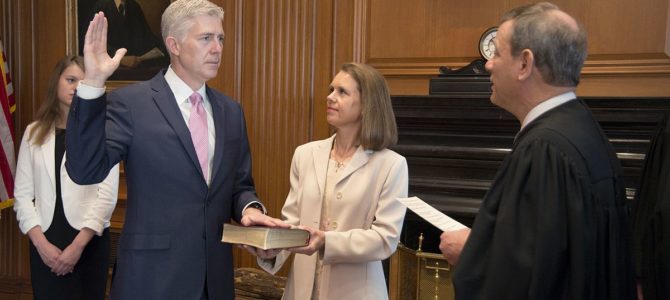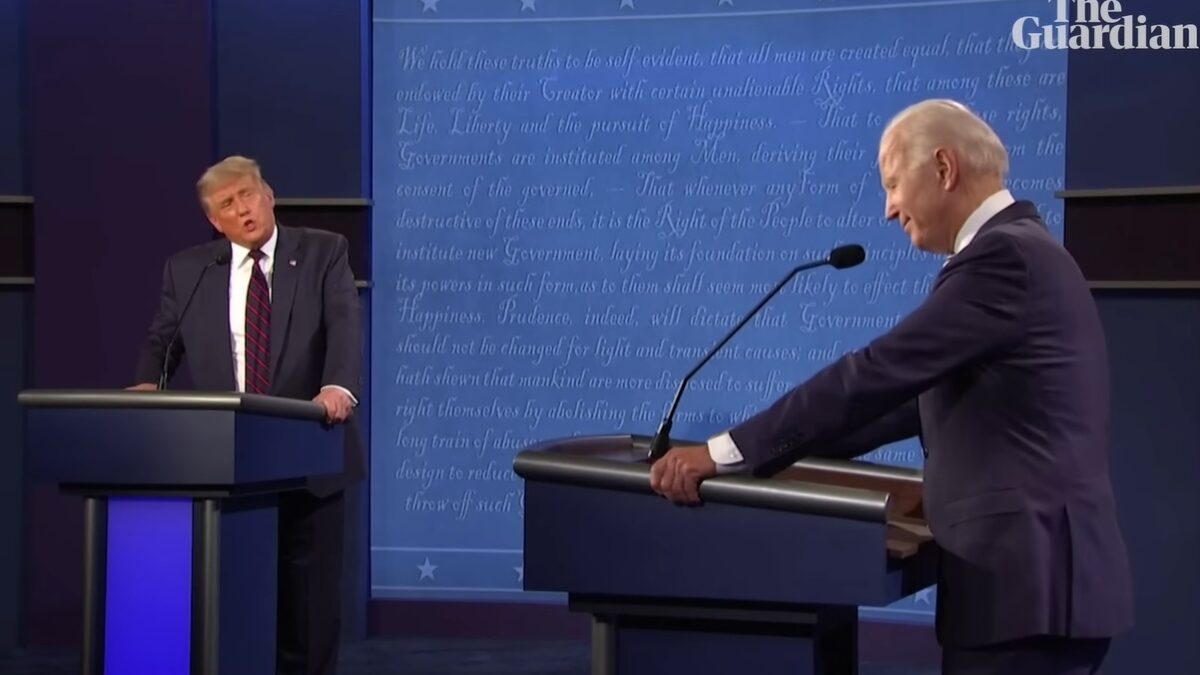
“The judge story is an untold story,” President Donald Trump said Monday, with Senate Majority Leader Mitch McConnell standing beside him. “When you think about it, Mitch and I were saying, that has consequences 40 years out, depending on the age of the judge, but 40 years out.”
Indeed, this “untold story” also got lost in a rambling White House press conference, and McConnell’s awkward presence underscored the tension between the two men although the majority leader is largely responsible both for Trump’s election and the greatest achievement of his presidency.
That’s because a president has few constitutional powers more important—certainly on the domestic front—than making judicial appointments. Legislative victories are typically short-lived, budget reforms sunset, regulations can be rescinded, and policy guidance is often not worth the paper it’s written on. But federal judicial appointments are for life; those black-robed arbiters continue shaping our world long after the president who appointed them has left the White House.
The Consequences Will Astound You
Justice Antonin Scalia served nearly 30 years on the Supreme Court as President Reagan’s bridge to the twenty-first century. To take a lower-profile example, last year an important ruling on nonprofit-donor disclosures was made by a district judge in California who was appointed by Lyndon Johnson.
Every four years, legal pundits make the case that judicial nominations should be among voters’ primary considerations when choosing a president. In the 2016 election, they truly were, as the vacant Supreme Court seat crystallized the issue for a big chunk of Republican voters. These were not necessarily the working-class “Reagan Democrats” who were so important in the Rust Belt, but the traditional conservatives, legal elites, and evangelicals many thought would abandon the GOP when Trump secured the nomination.
These voters knew they were voting not just for a president whom they may have found distasteful, but also weighing the balance of the Supreme Court for a long, long time. McConnell made sure of that, announcing his controversial decision not to take up any pre-election nomination without consulting his caucus or allowing President Obama to nominate Merrick Garland or anyone else.
Besides the Scalia seat—now filled by Neil Gorsuch, who is already making a name for himself—three other justices were older than 78 last November. Given that Ruth Bader Ginsburg is now 85, Anthony Kennedy is 81, and Stephen Breyer is 79, Trump wasn’t crazy in predicting over the weekend that he’d end up with four SCOTUS picks in his first term alone.
That goes just as much or more for the lower courts, which decide 35,000 cases annually even as the Supreme Court set a new low with only 62 rulings after argument last term, less than half the number from just a generation ago. Every four-year term, a president appoints around a fifth of the judiciary, meaning that a two-term presidency is worth about 40 percent of the currently authorized 894 Article III judgeships. (Bill Clinton got 373 judges confirmed, George W. Bush 327, Barack Obama 329.) Put another way, when Obama took office, one of the 13 federal circuit courts of appeals had a majority of Democratic-appointed judges—the west-coast Ninth Circuit that’s now the heart of the judicial #resistance—but eight years later, and to this day, nine do.
A Refreshing New Class of Able Justices
Trump is now doing his best to reverse all that, with the able help of McConnell and Judiciary Committee Chairman Chuck Grassley, who won reelection by 25 points in supposedly swing-state Iowa despite millions of dollars spent against him on the Garland blockade. On Inauguration Day, there were 105 judicial vacancies, and that has increased to nearly 150, including 21 circuit judges. By the end of September, Trump had made 58 nominations—more than any president going back at least to Reagan—and confirmed seven (where Obama had three and George W. Bush six).
To his credit, Trump has allowed White House Counsel Don McGahn’s team to run this show, with the advice of Federalist Society Executive Vice-President Leonard Leo and that organization’s network of ideologically committed—not party-driven—members. (Full disclosure: I’m an active member.) Occasionally a senator will insist on a crony, but the ratio of solid, “movement” nominees to establishmentarian hacks is exceedingly high. It’s refreshing to debate whether a judicial candidate would be too judicially “restrained”—overly deferential to government—rather than whether he or she is actually a squish with no underlying originalist or textualist principles.
Realizing the danger in all this to their general jurisprudential non-theory of willy-nilly social-justice-seeking, Democratic senators have used every parliamentary trick in their power to slow this particular Trump train. Of course, they no longer have the biggest brake, the filibuster, because Harry Reid got rid of it in 2013 (after having begun to use it for partisan purposes a decade earlier, for the first time in our nation’s history).
Accordingly, Democrats are forcing more cloture votes than any early presidency and demanding the full 30 hours of floor time per nominee that Senate rules allow. They’re also refusing to return “blue slips,” meaning the home-state senator’s traditional prerogative to decide whether and when to allow a nomination to be considered.
We Don’t Like the Consequences of Losing Elections
Minnesota’s Sen. Al Franken, for example, has kept his blue slip for Eighth Circuit nominee David Stras, a Minnesota Supreme Court justice who was elected to his seat by a greater margin than Franken was to his. The first-ever Jewish justice on the state high court and a well-regarded academic, Stras was also on Trump’s Supreme Court list.
Similarly, Oregon’s Ron Wyden and Jeff Merkley are blocking the nomination of Ryan Bounds to the Ninth Circuit, citing the evasion of an in-state “judicial selection committee” that has never been used to pick circuit nominees. That non-tradition makes sense, because circuit judges preside over the law of their entire circuit, not just the state (or part of it) like district judges.
Then there’s the demagoguery. Last month there was the bigotry thrown at Seventh Circuit nominee Amy Comey Barrett—recall Sen. Dianne Feinstein’s “dogma lives loudly within you” line. Franken’s attack on Stras is wholly guilt-by-association—with Justice Clarence Thomas, for whom Stras clerked, and Justice Scalia, whom he’s cited as an influence.
All of these people, along with Third Circuit nominee Stephanos Bibas, Sixth Circuit nominee Joan Larsen, Tenth Circuit nominee Allison Eid, and D.C. Circuit nominee Greg Katsas, among others, are real intellectual heavyweights. Recent Fifth Circuit nominees Don Willett and Jim Ho—which announcement showed that Sen. Ted Cruz won the Texas battle royale over the preferences of fellow Republicans Sen. John Cornyn and Gov. Greg Abbott—are also stellar (and personal friends of mine). But all of these fine folks, with whom I certainly don’t always agree, will face stiff obstruction (and have already).
Look, I have no problem with senators voting against nominees. Then the voters can evaluate each senator’s judgment in that regard. I also have no problem with a Senate checking a president—I encourage it!—subject again to electoral review. But the abuse of senatorial tradition and privilege by individual senators is a bridge too far. I hope Grassley reaches the end of his patience sooner rather than later, taking McConnell’s recent advice of getting rid of blue slips that are taking too long for no good reason.
At the end of the day, all of these stalling tactics are just that: stalling tactics. As economist Herbert Stein would say, they can’t go on forever, so they won’t. And we’ll be left with the best judges. Let me tell ya, you’ll love ’em.









